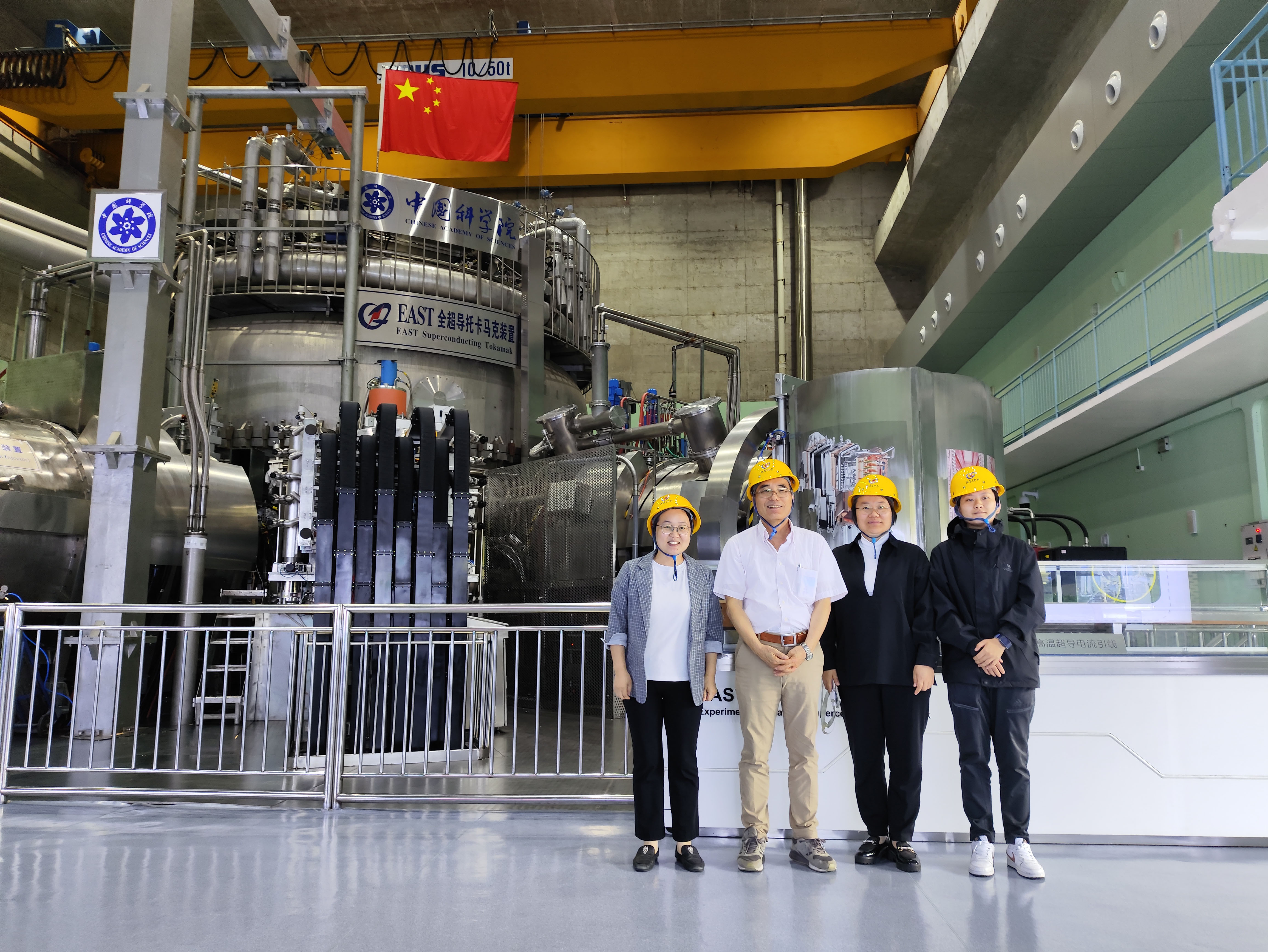
The collaboration based on the PIFI project was mainly aimed at developing a visible spectrometer system.
This system consists of one-dimensional optical fiber array for measuring full radial profiles of visible bremsstrahlung continuum and magnetic dipole forbidden (M1) transitions from tungsten ions in core region, as well as two-dimensional (2-D) optical fiber array to measure 2-D image of impurity line emissions in edge divertor region of EAST tokamak plasma.
Each fiber array is connected to an entrance slit of each visible spectrometer with 30cm grating focal length. The CMOS detector with high time resolution in observing the spectral image at the spectrometer focal position was adopted for the two visible spectrometer systems.
The PIFI project was scheduled for 28 months from August 1st, 2021 to December 31st, 2023, but due to COVID-19, the design work had to be carried out through online-collaboration and e-mails. The performance examination of the spectrometer system in laboratory room and the system installation to the EAST tokamak were also partly done through online-collaboration.
However, I was able to visit Hefei for the first time after the pandemic ended, spending 9 days from September 19 to September 27th, 2023. During that time I worked with members of spectroscopic group, including Prof. L.Zhang, Dr. Y.X.Cheng and two master course students, both in the EAST room where the fiber arrays are installed and the underground room where the spectrometers are placed.
We carefully readjusted the fiber array position at the entrance slit for both spectrometers, and finally succeeded to obtain an excellent fiber image on the CMOS detector. We also made intensity and wavelength calibrations using an integral sphere and several visible light sources, respectively.
Through the online-collaboration several papers were published in well-known scientific journals.
Additionally, I presented a plenary talk at the 6th Asia-Pacific Conference on Plasma Physics (AAPPS-DPP2022) titled "Observation of Magnetic Dipole (M1) Forbidden Lines in Fusion Plasmas and Its Contribution to Atomic Physics and Burning Plasma Diagnostics," which resulted from the PIFI collaboration.
I stayed in Hefei for two months from October 14th to December 14th, 2023, and my wife joined me for the first three weeks. During my stay, I had two important meetings: the 4th International Diagnostic Advisory Panel (IDAP) for review of BEST diagnostic design (16-17 November 2023) and Joint Meeting of 10th EAST IAC and 4th BEST PAC (5-6 December 2023). These meetings provided me with valuable opportunity to learn about the latest information on the EAST upgrade scenario and present status of BEST construction, as well as to prepare a report on the review of BEST diagnostic development.
I also got a chance to visit SWIP as an invited professor, and stayed in Chengdu from Nov. 12th-16th, 2023. While there, I gave a presentation titled "Observation of flow velocity of carbon ions induced by friction force in edge stochastic magnetic field layer of LHD". I spent my days discussing spectroscopy, impurity transport, FIDA diagnostic, and more with many young scientists and PhD students at HL-III tokamak. We also discussed scenarios and content for future paper writing.
During our stay at HFIPS apartment on the east end of the science island, we found the room to be spacious enough for two people to live comfortably. Thanks to the kindness of Prof. L.Zhang, a second bed was provided that ensured a comfortable living. The room was able to maintain a relatively high temperature of 16 degress even if the outdoor temperature was a few degrees.
The area around the apartment was very quiet and we had a good night's sleep every day. We quickly learned how to get a bus to the nearby supermarket, and my wife even found a Baidu application on her phone that could inform us of the bus schedule.
As we could pay by cash or bankcard in the supermarket, we did not entirely feel inconvenienced. My daily routine in Japan is to walk a little fast around my town. Then, I found a big change in the walking pedestal of the road and installation of street lights, in particular, at east side of the island in the vicinity of science museum. I could now walk much safer than before, even when it gets dark. My wife, therefore, could enjoy the sunset so much by walking safely to the bridge. I was able to rent a bicycle for daily use. It made my daily life very efficient and comfortable. Sometimes, however, electric bikes suddenly came from the opposite direction in the side road. It was really dangerous. I really hope to see in near future the sidewalks and bicycle paths leading to the CRAFT area from the island.
I could meet many Chinese students in both Hefei and Chengdu who were previously working with me as a PHD student in NIFS. I could also meet many friends made through Japan-China collaboration and A3 foresight project. We were invited to dinner and to excursion several times. It was really an enjoyable time to us. Here, I would like to acknowledge all people who kindly took take care of me and my wife.

